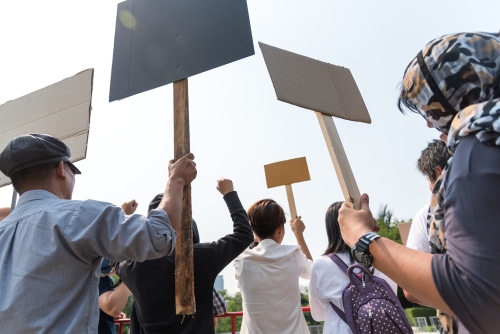
Managing a strike incident effectively is critical for any organization facing labor unrest. Strikes can disrupt operations, affect employee morale, and tarnish the company’s reputation. Effective management involves careful planning, communication, and adherence to legal requirements. This guide provides a comprehensive overview of strike incident management, including preparation, response, and resolution strategies.
1. Understanding Strikes
Definition and Types of Strikes
A strike is a work stoppage initiated by employees as a protest against their employer, typically due to disputes over wages, working conditions, or other employment terms. Strikes can be categorized into several types:
- Economic Strikes: These occur when employees demand higher wages or improved benefits.
- Unfair Labor Practice Strikes: Triggered by allegations that the employer has violated labor laws.
- Recognition Strikes: Aimed at compelling the employer to recognize and negotiate with a union.
- Sympathy Strikes: Conducted in support of a strike initiated by workers in a different company or industry.
- Wildcat Strikes: Unofficial strikes not sanctioned by the union.
Legal Framework
The legal aspects of strikes vary by jurisdiction but generally involve regulations that govern the right to strike, notice requirements, and the permissible conduct of both employers and employees. In the United States, the National Labor Relations Act (NLRA) outlines the rights of workers and employers during labor disputes.
2. Preparation for a Potential Strike
Risk Assessment
Conducting a thorough risk assessment is the first step in strike preparation. This involves identifying potential sources of labor unrest, evaluating the likelihood of a strike, and assessing the potential impact on operations.
Strike Contingency Planning
Develop a comprehensive contingency plan that includes:
- Business Continuity: Strategies to maintain operations during a strike, such as cross-training employees, hiring temporary workers, or outsourcing critical tasks.
- Communication Plan: Clear communication strategies to keep stakeholders informed, including employees, customers, suppliers, and the media.
- Legal Compliance: Ensuring all actions taken during a strike comply with labor laws and regulations to avoid legal repercussions.
Employee Relations
Fostering positive employee relations can mitigate the risk of strikes. This involves:
- Regular Communication: Keeping employees informed about company decisions and changes.
- Addressing Grievances: Establishing mechanisms to address employee grievances promptly and fairly.
- Engagement Programs: Implementing programs that enhance employee engagement and satisfaction.
3. Responding to a Strike
Initial Response
When a strike occurs, the initial response is crucial in determining the outcome. Key steps include:
- Activate the Contingency Plan: Implement the pre-developed contingency plan to ensure business continuity.
- Form a Strike Management Team: Assemble a team responsible for managing the strike, including representatives from HR, legal, communications, and operations.
- Assess the Situation: Evaluate the scope and scale of the strike to understand its impact on the organization.
Communication Strategy
Effective communication during a strike is vital to maintain trust and transparency. Key components include:
- Internal Communication: Keep non-striking employees informed about the situation and reassure them about their job security and safety.
- External Communication: Inform customers, suppliers, and other stakeholders about the strike and the measures being taken to minimize disruptions.
- Media Management: Prepare a press release and appoint a spokesperson to handle media inquiries.
Legal Considerations
Ensure all actions taken during the strike are legally compliant. This includes:
- Documentation: Keep detailed records of all communications and actions taken during the strike.
- Non-Retaliation: Avoid any actions that could be perceived as retaliatory against striking workers.
- Use of Replacement Workers: Understand the legal implications of hiring replacement workers, which vary by jurisdiction.
4. Negotiation and Resolution
Engaging in Negotiations
Negotiations are a critical component of resolving a strike. Effective negotiation strategies include:
- Good Faith Bargaining: Engage in negotiations with a genuine intent to reach an agreement.
- Understanding Interests: Identify the underlying interests of both parties to find mutually acceptable solutions.
- Mediation: Consider involving a neutral third-party mediator to facilitate negotiations.
Reaching an Agreement
The goal of negotiations is to reach an agreement that addresses the concerns of both parties. Key aspects include:
- Drafting the Agreement: Ensure the agreement is clearly drafted, outlining the terms and conditions agreed upon.
- Ratification: The agreement should be ratified by both the union and the employer.
- Implementation: Develop a plan to implement the agreement and communicate it to all stakeholders.
Post-Strike Recovery
Recovering from a strike involves restoring normal operations and rebuilding trust within the organization. Steps include:
- Employee Reintegration: Facilitate the smooth reintegration of striking employees back into the workforce.
- Addressing Residual Issues: Identify and address any lingering issues that may have contributed to the strike.
- Monitoring Compliance: Ensure that both parties adhere to the terms of the agreement.
5. Financial Impact Assessment
Understanding the Financial Implications
Strikes can have significant financial implications for an organization, including direct and indirect costs. Direct costs involve lost productivity, wages paid to non-striking workers, and expenses related to hiring temporary replacements. Indirect costs can include damage to the company’s reputation, loss of customer trust, and potential long-term impacts on employee morale and productivity.
Strategies for Financial Management
- Cost Estimation: Conduct a detailed estimation of potential costs associated with the strike, including operational disruptions, legal fees, and public relations expenses.
- Budget Allocation: Allocate a budget specifically for strike management and ensure funds are available to cover unexpected expenses.
- Financial Contingency Planning: Develop financial contingency plans to manage cash flow and maintain financial stability during a strike.
Long-term Financial Planning
Consider the long-term financial impact of a strike and incorporate it into the company’s financial planning. This includes evaluating the cost of potential future strikes and investing in measures to improve labor relations and prevent future disputes.
6. Technology and Infrastructure
Leveraging Technology During a Strike
Technology can play a crucial role in managing a strike and maintaining business continuity. Key areas where technology can be leveraged include:
- Remote Work Capabilities: Implementing robust remote work systems to enable non-striking employees to continue their work from offsite locations.
- Communication Tools: Utilizing digital communication tools to ensure seamless communication between management, employees, and external stakeholders.
- Data Security: Ensuring that data security measures are in place to protect sensitive information during the strike.
Infrastructure Considerations
Evaluate the company’s infrastructure to ensure it can support operations during a strike. This includes:
- Alternative Work Locations: Identifying alternative work locations and ensuring they are equipped to handle business operations.
- Logistics and Supply Chain: Assessing the impact of the strike on logistics and supply chain operations and developing alternative strategies to ensure continuity.
- IT Support: Ensuring that IT systems and support are available to address any technical issues that may arise during the strike.
7. Psychological and Social Impact
Understanding the Impact on Employees
Strikes can have a significant psychological and social impact on employees, both those participating in the strike and those who continue to work. Key considerations include:
- Stress and Anxiety: Strikes can cause stress and anxiety among employees, affecting their mental health and productivity.
- Workplace Relationships: Strikes can strain workplace relationships, leading to conflicts and reduced teamwork.
- Employee Morale: Prolonged strikes can negatively impact employee morale and job satisfaction.
Support Strategies
Implement strategies to support employees during and after a strike, including:
- Mental Health Support: Providing access to mental health resources, such as counseling services, to help employees cope with stress and anxiety.
- Conflict Resolution: Implementing conflict resolution mechanisms to address any tensions or conflicts that arise during the strike.
- Rebuilding Team Spirit: Organizing team-building activities and events to rebuild team spirit and improve workplace relationships after the strike.
8. Legal and Regulatory Compliance
Navigating Legal Requirements
Understanding and complying with legal and regulatory requirements is crucial during a strike. Key areas to consider include:
- Strike Notices: Ensuring that all required strike notices are issued in compliance with labor laws and regulations.
- Labor Law Compliance: Adhering to labor laws and regulations regarding the treatment of striking workers, use of replacement workers, and negotiation processes.
- Documentation and Record-Keeping: Maintaining detailed records of all actions taken during the strike to ensure legal compliance and protect the company in case of legal disputes.
Legal Support
Engage legal counsel to provide guidance and support during the strike. Legal counsel can assist with:
- Reviewing Compliance: Reviewing the company’s actions to ensure compliance with labor laws and regulations.
- Negotiation Support: Providing support during negotiations to ensure that the company’s interests are protected.
- Dispute Resolution: Assisting with dispute resolution processes, including mediation and arbitration, if necessary.
9. Training and Development
Preparing Management and Employees
Training and development are essential to prepare management and employees for handling strike incidents. Key areas of focus include:
- Management Training: Providing training for managers on strike management strategies, legal compliance, and effective communication.
- Employee Awareness: Educating employees about their rights and responsibilities during a strike, as well as the company’s policies and procedures.
- Crisis Management: Implementing crisis management training to equip management and employees with the skills to handle emergencies and unexpected situations during a strike.
Continuous Improvement
Incorporate lessons learned from past strike incidents into training and development programs. This includes:
- Post-Strike Analysis: Conducting a post-strike analysis to identify areas for improvement and incorporate these insights into future training programs.
- Regular Updates: Regularly updating training programs to reflect changes in labor laws, regulations, and best practices.
- Feedback Mechanisms: Implementing feedback mechanisms to gather input from employees and managers on the effectiveness of training programs and make necessary adjustments.
10. Public Relations and Media Management
Managing Public Perception
Public perception plays a crucial role in the success of an organization during a strike. Key strategies for managing public relations include:
- Proactive Communication: Developing a proactive communication plan to inform the public about the company’s position and actions during the strike.
- Media Engagement: Engaging with the media to ensure accurate and balanced coverage of the strike.
- Social Media Management: Utilizing social media platforms to communicate directly with the public and address any misinformation or concerns.
Crisis Communication Plan
Develop a crisis communication plan that outlines the steps to be taken in case of negative publicity or media coverage. Key components include:
- Spokesperson Training: Training designated spokespersons to handle media inquiries and represent the company effectively.
- Press Releases: Preparing press releases and official statements to provide timely and accurate information to the media and the public.
- Monitoring and Response: Monitoring media coverage and social media discussions to identify and respond to potential issues promptly.
11. Stakeholder Engagement
Identifying Key Stakeholders
Identify key stakeholders who may be affected by the strike and develop strategies to engage with them. Key stakeholders include:
- Employees: Both striking and non-striking employees are directly affected by the strike and need to be kept informed and supported.
- Customers: Customers may be concerned about the impact of the strike on the company’s products or services and need reassurance.
- Suppliers and Partners: Suppliers and partners may be affected by disruptions in the supply chain and need to be kept informed about the company’s contingency plans.
Engagement Strategies
Develop strategies to engage with stakeholders effectively, including:
- Regular Updates: Providing regular updates to stakeholders about the status of the strike and the company’s actions.
- Feedback Mechanisms: Implementing mechanisms to gather feedback from stakeholders and address their concerns.
- Collaborative Approach: Engaging with stakeholders collaboratively to develop solutions and minimize the impact of the strike.
12. Evaluation and Continuous Improvement
Post-Strike Evaluation
Conduct a thorough evaluation of the strike management process after the resolution of the strike. Key areas to evaluate include:
- Effectiveness of Contingency Plans: Assessing the effectiveness of the contingency plans in maintaining business continuity.
- Communication Effectiveness: Evaluating the effectiveness of communication strategies in keeping stakeholders informed and managing public perception.
- Negotiation and Resolution: Analyzing the negotiation process and the terms of the agreement to identify areas for improvement.
Continuous Improvement
Use the insights gained from the post-strike evaluation to improve future strike management strategies. This includes:
- Updating Plans and Procedures: Updating contingency plans, communication strategies, and negotiation procedures based on the lessons learned.
- Training and Development: Incorporating the insights from the evaluation into training and development programs.
- Feedback Integration: Integrating feedback from employees, managers, and stakeholders into the continuous improvement process.
13. Building a Resilient Organizational Culture
Fostering a Positive Work Environment
Building a resilient organizational culture can help prevent strikes and improve the company’s ability to manage labor disputes effectively. Key strategies include:
- Employee Engagement: Implementing programs to enhance employee engagement and satisfaction.
- Open Communication: Fostering an open communication culture where employees feel comfortable voicing their concerns and suggestions.
- Recognition and Rewards: Recognizing and rewarding employees for their contributions and achievements.
Strengthening Labor Relations
Develop strategies to strengthen labor relations and build trust between management and employees, including:
- Regular Dialogue: Engaging in regular dialogue with employees and unions to address potential issues proactively.
- Collaborative Problem-Solving: Encouraging collaborative problem-solving approaches to address workplace issues and improve working conditions.
- Mutual Respect: Promoting a culture of mutual respect and understanding between management and employees.
Final Thoughts
Effective strike incident management requires a multi-faceted approach that includes thorough preparation, strategic response, and continuous improvement. By understanding the financial, legal, psychological, and social impacts of a strike, leveraging technology and infrastructure, and engaging with stakeholders, organizations can navigate strike incidents successfully and minimize their impact.
Investing in training and development, fostering a resilient organizational culture, and maintaining transparent communication are essential for preventing strikes and ensuring a swift resolution when they occur. Through proactive engagement, collaboration, and a commitment to continuous improvement, organizations can build a strong foundation for managing labor disputes and maintaining positive labor relations.









